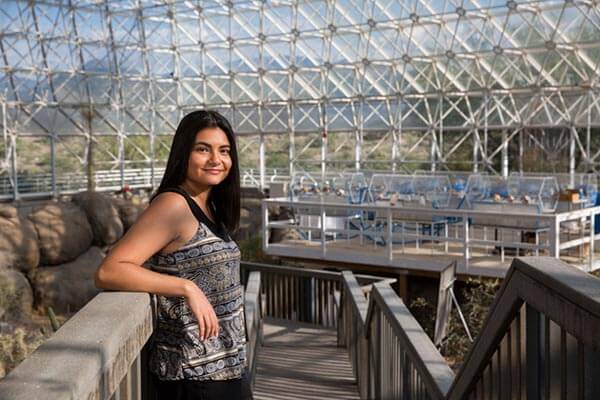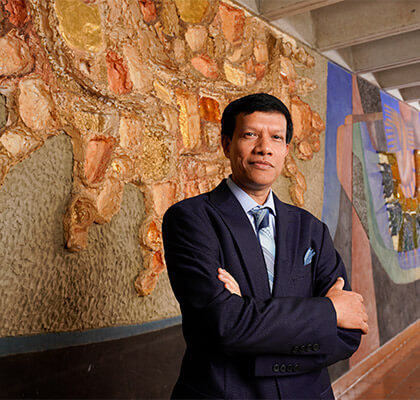by Alex Z. Salinas (B.A. ’11)
(This piece ran as part of a series on the importance of summer experiences as a component of students’ learning and career development.)

Summer internships are experiences designed to expand the world of undergraduates. But for one St. Mary’s University junior, it was a summer living in a bubble.
Well, sort of.
Environmental Science major Alex Salinas (no relation to the writer) spent most of her internship at Tucson, Arizona’s Biosphere 2, a 3.14-acre, glass-encased ecological facility sealed off from the world.
Inside the University of Arizona-owned structure, where the interaction of life, water and climate are studied daily, research projects relating to climate change have been underway for years. Salinas joined one such project focused on soil formation processes and how plants interact in harsh, rocky environments.
“My job was to try to figure out what role roots, mycorrhizae (a fungus that has a symbiotic relationship with plant roots) and microbial activity have on the biological and chemical weathering of rock during its initial stages of soil formation,” she said.
In other words, “we were growing plants in pure, plain rock without fertilizer and extra nutrients,” Salinas said.
Salinas’ part involved analyzing root scans from plants including buffalo grass and ponderosa pine, and organizing the data she collected, such as root diameter, root length and the number of branches and forks.
“This root data was correlated with our chemical analysis of the rocks and plants to find any relationships between the root architecture and the biological weathering of the rocks,” she said.
This information can later help scientists “manage soil and grow crops on poor soil or traditionally nonarable land,” Salinas said.
As for working inside the Biosphere 2, she described the experience as “incredible.”
“I don’t think there’s anywhere else in the world where scientific research is so open to the public,” she said. “I couldn’t really walk anywhere in there without bumping into an experiment or tour group.”






